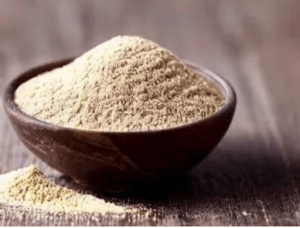What is the best substitute for Semolina Flour?
Are you looking for a substitute for semolina flour? Semolina flour is often used in various recipes for its coarse texture and distinctive flavor. If you’re looking for substitutes for semolina flour, you should consider the following options: Whole Wheat Flour, All-Purpose Flour, Rice Flour, Cornmeal, Quinoa Flour, Chickpea Flour, Coconut Flour, Almond Flour.
Remember that when substituting flours, especially in baking, the results might vary due to differences in texture, flavor. There can also be differences due to the gluten content. Why not make a test batch before using it in a larger recipe?
What is Semolina Flour?
Semolina flour is a type of flour that is made from durum wheat. Durum wheat is a hard variety of wheat that has a high protein and gluten content. Semolina is typically coarser and grittier in texture compared to regular wheat flours. Semolina also has a distinct pale yellow color.
Italians use semolina flour extensively in their culinary traditions, particularly in the production of pasta. In fact the term “semolina” comes from the Italian word “semola,” which means bran. Semolina flour is a key ingredient in many types of Italian pasta due to its unique texture and ability to create pasta shapes that hold sauces well.
It has been used for centuries in various cuisines around the world, particularly in Mediterranean, Middle Eastern, and North African cultures.
The milling process for semolina involves grinding the endosperm of durum wheat into granular particles. This results in a flour with a slightly rough texture. The rough texture is great for making pasta, couscous, and certain types of bread. The texture of semolina is particularly well-suited for creating pasta dough that holds its shape and texture when cooked.
It is also used in various desserts and baked goods, such as puddings, cakes, and pastries. It adds a unique flavor and texture to these dishes. Because of its coarser nature, semolina can create a slightly grainy or gritty texture in the final product, which is appreciated in certain culinary applications.
Okay, before we look at your semolina flour substitute options, let’s deal with that empty cupboard situation!
Where can I buy Semolina Flour?
If you want to be more prepared and ensure you don’t run out of semolina flour then you should stock up now.
Nowadays most delicatessens and general supermarkets stock semolina flour. Or if you prefer you can also purchase semolina flour on-line.
So why not jump on and place your order today.
STOCK UP NOW!
Made from Durum Wheat this semolina flour has it all. Great for making breads, pastas, pizzas and other delicious homebakes.
It will easily enhance the crumb and overall texture of breads – just give it a try.
What can I substitute for Semolina Flour?
Here are some of the best ingredients to substitute the flavor and role that semolina flour provides in your recipes.
- Whole Wheat Flour
- All-Purpose Flour
- Rice Flour
- Cornmeal
- Quinoa Flour
- Chickpea Flour
- Coconut Flour
- Almond Flour
Semolina Flour substitutes
Whole Wheat Flour
Substituting whole wheat flour for semolina flour can work in some recipes, but it’s important to note that there are differences in texture, flavor, and gluten content. Semolina is coarser and has a unique flavor, while whole wheat flour is finer and has a nuttier taste. Here’s how you can use whole wheat flour as a substitute for semolina flour:
- Whole wheat flour is finer than semolina, so you may end up with a smoother texture in your final product. This might be more noticeable in recipes that rely on the coarser texture of semolina, such as pasta or certain baked goods.
- Whole wheat flour has a distinct nutty flavor due to the presence of wheat germ and bran. This flavor might alter the taste of your dish, which can be either desirable or not, depending on the recipe.
- Start by substituting whole wheat flour in a 1:1 ratio with semolina. You can adjust this ratio based on the recipe and your preference. If you want to maintain some of the coarser texture, try mixing whole wheat flour with a smaller portion of cornmeal. This will allow you to achieve a similar texture to semolina.
- Whole wheat flour has a higher protein content than semolina, which means it has more gluten. This can impact the structure and texture of baked goods. In recipes like bread, you might need to adjust liquid levels and kneading techniques to achieve the desired outcome.
- It’s a good idea to experiment with a small batch before making larger quantities. This will allow you to gauge the texture, flavor, and overall impact of the substitution on your recipe.
- Whole wheat flour might work well as a substitute in recipes like muffins, pancakes, or cookies, where the nutty flavor and slightly different texture can enhance the dish. However, in recipes where the texture and flavor of semolina are more critical, such as certain types of pasta, it might not give you the same results.
In summary, using whole wheat flour as a substitute for semolina flour requires consideration of the recipe’s texture and flavor requirements. While it might not be an exact match, it can still provide interesting results. With its nutty flavor and potential health benefits from the whole grains it can be interesting to cook with.
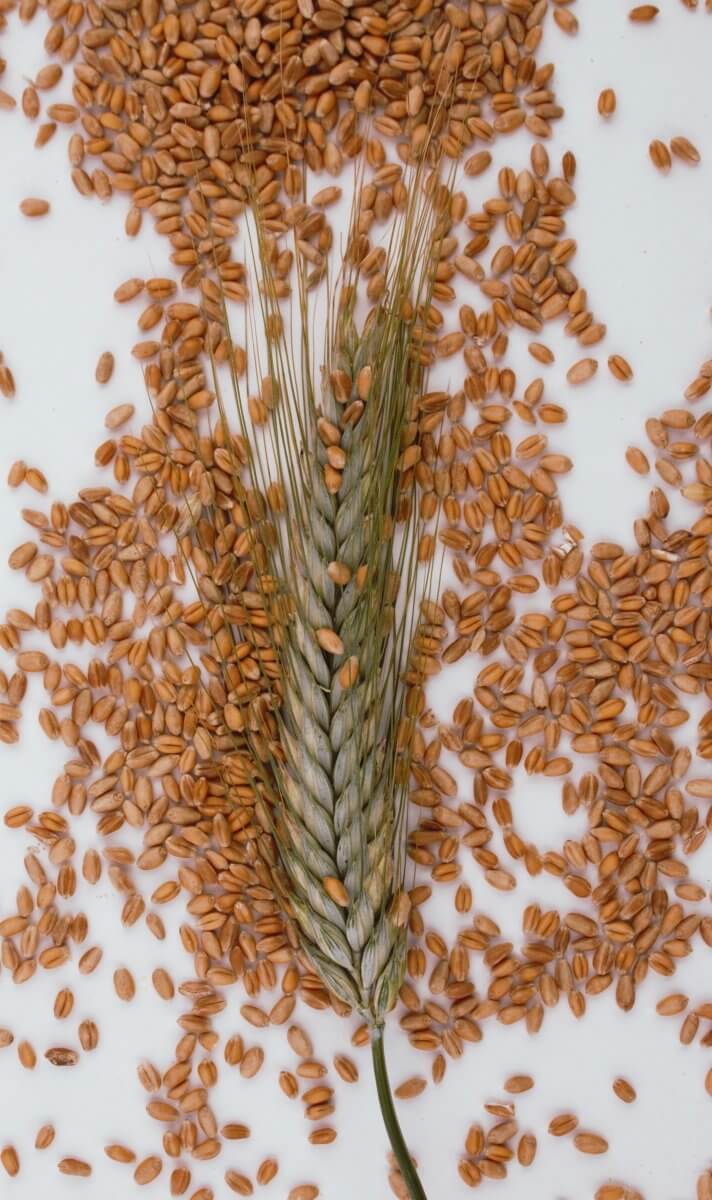
All-Purpose Flour
Using all-purpose flour as a substitute for semolina flour is feasible. However, there are some important factors to consider due to the differences in texture and properties of the two flours. Here’s how you can use all-purpose flour as a substitute for semolina flour:
- All-purpose flour is finer and smoother than semolina flour, which has a coarser texture. When substituting all-purpose flour for semolina, you’ll likely end up with a smoother texture in the final product.
- Semolina flour has a distinct flavor that sets it apart from all-purpose flour. The flavor of your dish may be altered when using all-purpose flour as a substitute, as it lacks the unique taste of semolina.
- Start by substituting all-purpose flour in a 1:1 ratio with semolina. Keep in mind that all-purpose flour is finer, so you might need to use slightly less of it in the recipe.
- All-purpose flour has a different gluten content than semolina, which can affect the structure and texture of baked goods. If your recipe relies on the texture and structure that semolina provides, the substitution might yield different results.
- Before making a larger batch, consider testing the substitution in a small batch to see how it affects the final product. This will help you understand the impact of the substitution on both texture and flavor.
- All-purpose flour can be a suitable substitute in recipes where the coarser texture of semolina is not crucial, such as some breads, cakes, and cookies. However, for dishes like pasta, where the specific texture and flavor of semolina are essential, the substitution might not give you the desired outcome.
- Depending on the recipe, you may need to adjust the liquid levels or binding agents when using all-purpose flour instead of semolina. This is particularly important in recipes that rely on semolina’s texture for proper binding.
In summary, while all-purpose flour can be used as a substitute for semolina flour in certain situations, it’s important to consider the differences in texture, flavor, and baking properties. Adapt the substitution based on the specific recipe and your desired outcome.

Rice Flour
Using rice flour as a substitute for semolina flour can be a suitable option in some recipes, especially when a gluten-free alternative is needed. However, there are important differences in texture and behavior between the two flours that you should consider. Here’s how you can use rice flour as a substitute for semolina flour:
- Rice flour is finer in texture compared to semolina flour, which has a coarser and grittier texture. Substituting rice flour may result in a smoother texture in your final dish.
- Rice flour is naturally gluten-free, making it a great choice for those with gluten sensitivities or dietary restrictions. If you’re looking for a gluten-free alternative to semolina, rice flour is a good option.
- Rice flour has a neutral flavor, whereas semolina flour has a distinct taste. Keep in mind that the flavor of your dish might be different when using rice flour.
- Start by substituting rice flour in a 1:1 ratio with semolina flour. Keep in mind that rice flour is finer, so you might need to use slightly less rice flour than the amount of semolina called for in the recipe.
- Rice flour doesn’t have gluten, which means it won’t provide the same structure and elasticity in baked goods as semolina. In recipes where semolina’s gluten content is important (such as bread), you might need to consider adding binding agents or combining rice flour with other gluten-free flours.
- Rice flour may absorb liquid differently than semolina, so you might need to adjust the liquid levels in your recipe to achieve the desired consistency.
- Rice flour can work well as a substitute in recipes where the coarser texture and flavor of semolina are not crucial, such as certain cakes, cookies, and gluten-free baked goods.
- Before making a larger batch, consider testing the substitution in a small batch to see how it affects the texture and flavor. This will help you gauge the impact of the substitution on your specific recipe.
In summary, using rice flour as a substitute for semolina flour can be a good choice in gluten-free recipes or when you’re looking for a smoother texture. However, keep in mind the differences in flavor, texture, and baking properties, and adapt the substitution based on the specific requirements of your recipe.
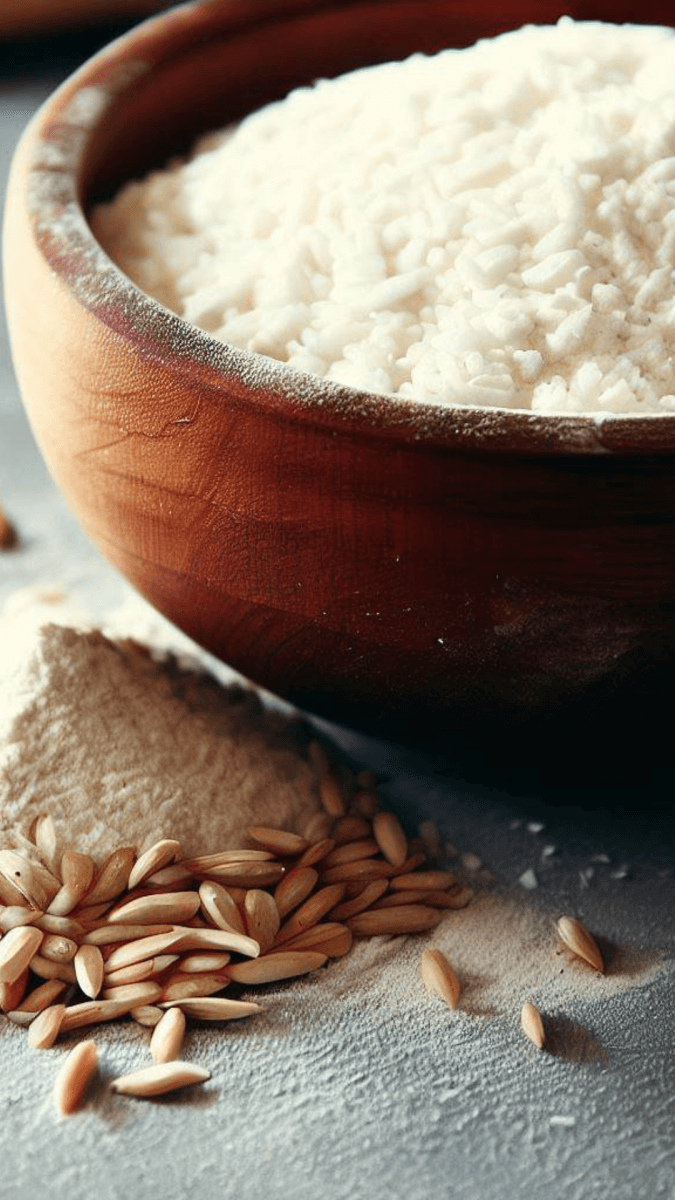
Cornmeal
Using cornmeal as a substitute for semolina flour can work well in some recipes, especially those that involve a coarse texture and a slightly nutty flavor. Keep in mind that cornmeal has a distinct flavor and texture compared to semolina, so the final result may have some differences. Here are some tips on how to use cornmeal as a substitute for semolina flour:
- When substituting cornmeal for semolina, start by using an equal amount by weight or volume. If the recipe calls for 1 cup of semolina, use 1 cup of cornmeal.
- Cornmeal is coarser than semolina, so the texture of the final product may be slightly different. This can be desirable in some dishes, such as in certain breads or crusts.
- Cornmeal has a distinctive corn flavor, which may alter the taste of the dish. This can be particularly noticeable in dishes with delicate flavors. Consider whether the corn flavor complements the overall taste of the recipe.
- In recipes where semolina is used for coating surfaces (such as in baking or pasta-making), cornmeal can be used similarly. For example, you can use cornmeal to dust pizza stones, baking sheets, or bread bottoms to add a crunchy texture.
- Use cornmeal to make dishes like polenta and grits. If your recipe calls for semolina in a polenta-like dish, substituting cornmeal can work well and offer a distinct flavor and texture.
- Before making a larger batch, consider testing the substitution in a small batch to see how the cornmeal affects the recipe.
- Cornmeal might not be an ideal substitute for all recipes that call for semolina. For instance, in delicate pastries where the texture and flavor of semolina are crucial, the substitution might not give you the desired results.
In summary, while cornmeal can be used as a substitute for semolina flour in certain recipes, it’s important to remeber there will be a difference in texture and flavor. Adapt the substitution based on the specific dish you’re preparing and whether the unique qualities of cornmeal complement the intended outcome.
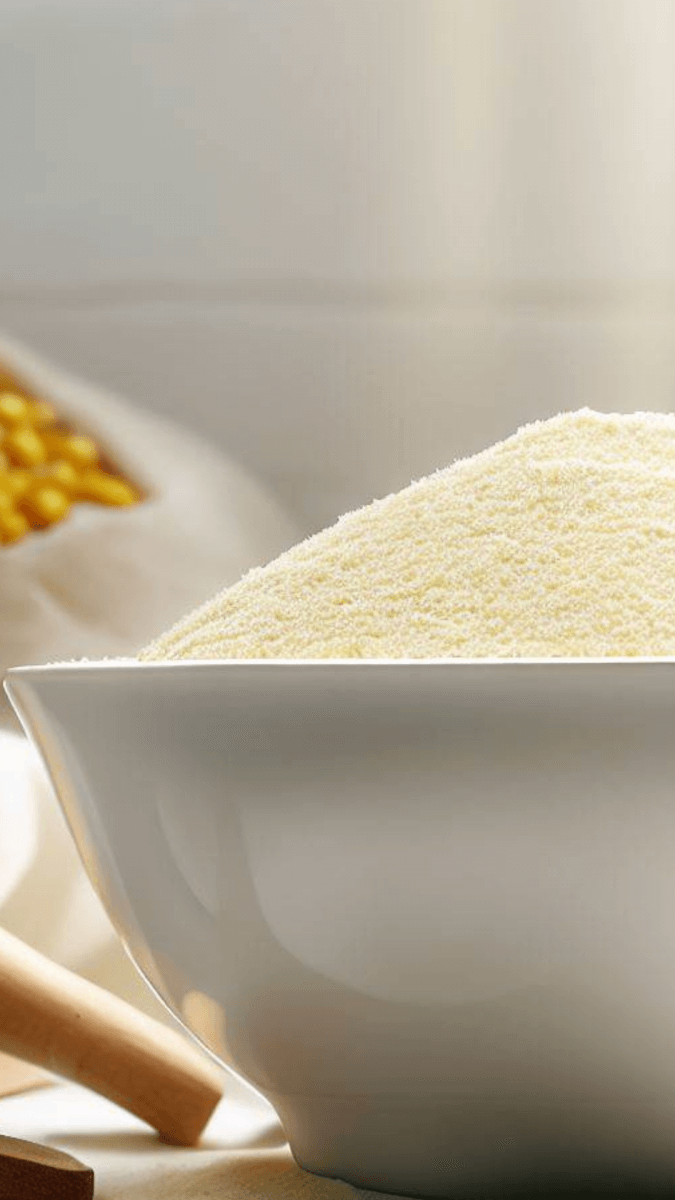
Quinoa Flour as a substitute for Semolina Flour
Using quinoa flour as a substitute for semolina flour can be an interesting choice, particularly if you’re looking for a gluten-free option with a unique flavor and nutritional profile. However, there are differences in texture and taste between the two flours, so it’s important to consider how the substitution will affect your recipe. Here’s how you can use quinoa flour as a substitute for semolina flour:
- Quinoa flour is generally finer than semolina flour, which has a coarser texture. This means that the final product might have a smoother texture when using quinoa flour.
- Quinoa flour has a distinct nutty and slightly earthy flavor, whereas semolina has its own unique taste. Keep in mind that the flavor of your dish might be different when using quinoa flour.
- Start by substituting quinoa flour in a 1:1 ratio with semolina flour. However, due to the finer texture of quinoa flour, you might need to use slightly less to achieve the desired consistency.
- Quinoa flour is gluten-free, making it a good option for those with gluten sensitivities or dietary restrictions.
- Quinoa flour can work well as a substitute in recipes that can benefit from its nutty flavor and where the coarser texture of semolina is not essential. Certain baked goods, such as muffins, pancakes, or cookies, can be enhanced by the distinct taste of quinoa flour.
- Before making a larger batch, consider testing the substitution in a small batch to understand how it affects the texture and flavor. This will help you gauge the impact of the substitution on your specific recipe.
- Depending on the recipe, you may need to adjust the amount of liquid as it might absorb liquid differently than semolina.
- Quinoa flour lacks the gluten that semolina contains, so in recipes that rely on gluten for structure (such as pasta dough or bread), you might need to use additional binding agents or combine quinoa flour with other gluten-free flours.
In summary, using quinoa flour as a substitute for semolina flour can work well in certain recipes where the unique flavor and gluten-free nature of quinoa flour are advantageous. Adapt the substitution based on the specific requirements of your dish and your preferences for taste and texture.
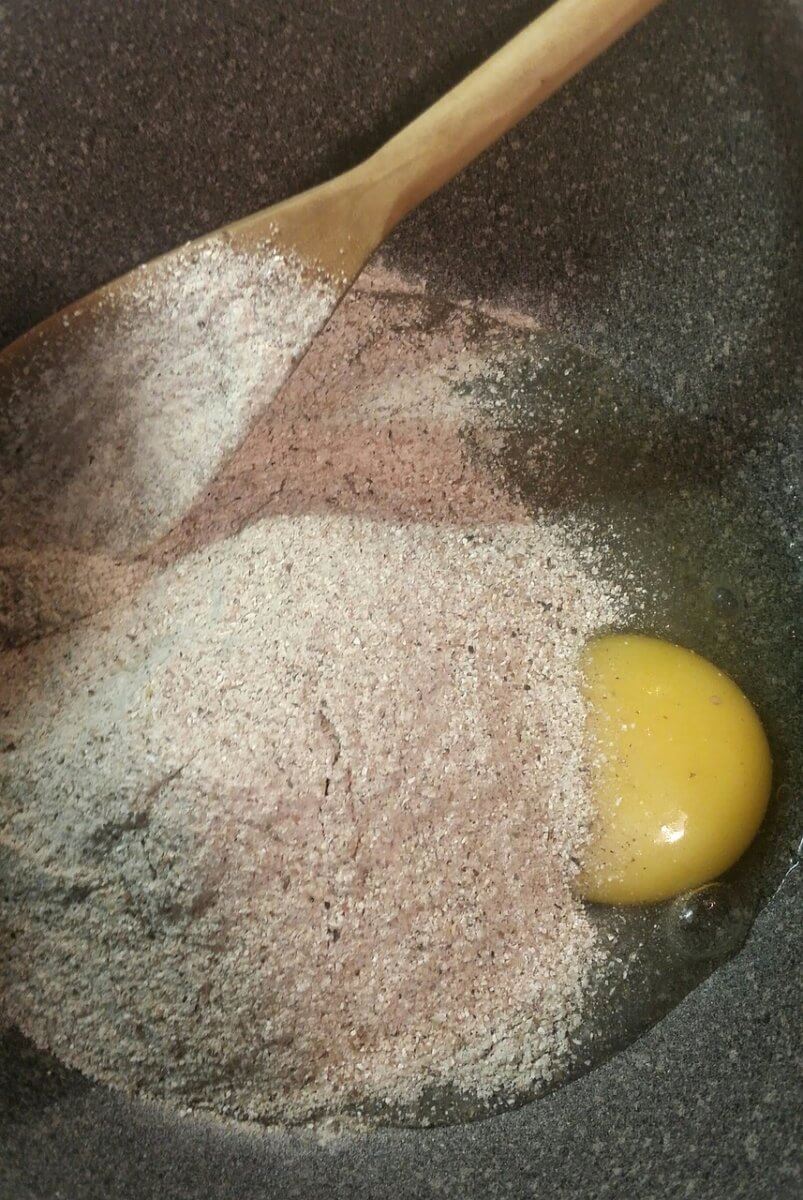
Chickpea Flour as a substitute for Semolina Flour
Substituting chickpea flour for semolina flour can work in some recipes, particularly if you’re looking for a gluten-free option with a distinct flavor and texture. Chickpea flour has a nutty taste and can provide a unique twist to your dishes. Here’s how you can use chickpea flour as a substitute for semolina flour:
- Chickpea flour has a slightly grainy texture, which can be similar to semolina’s coarse texture. In some recipes, this might work well to achieve a similar textural result.
- Chickpea flour has a distinct nutty and earthy flavor. It will introduce a unique taste to your dish, so consider whether this flavor profile complements the other ingredients.
- Start by substituting chickpea flour in a 1:1 ratio with semolina flour. Depending on the specific recipe, you might need to adjust the ratio to achieve the desired texture and consistency.
- Chickpea flour is naturally gluten-free, making it a great choice for those with gluten sensitivities or dietary restrictions.
- Chickpea flour can work well as a substitute in recipes where the distinct flavor and slightly grainy texture are desirable. Dishes like certain flatbreads, pancakes, or coatings for fried foods can benefit from the nutty taste of chickpea flour.
- Before making a larger batch, consider creating a small batch to see how it affects the texture and flavor. This will help you determine if the results are what you’re looking for.
- Chickpea flour may absorb liquid differently than semolina, so you might need to adjust the liquid levels in your recipe to achieve the desired consistency.
- Chickpea flour lacks gluten, so in recipes where gluten is necessary for structure (such as bread or pasta), you might need to use additional binding agents or combine chickpea flour with other gluten-free flours.
In summary, using chickpea flour as a substitute for semolina flour can work well in recipes where the unique flavor and texture of chickpea flour enhance the dish. Adapt the substitution based on the specific requirements of your recipe and the desired taste and texture outcome.
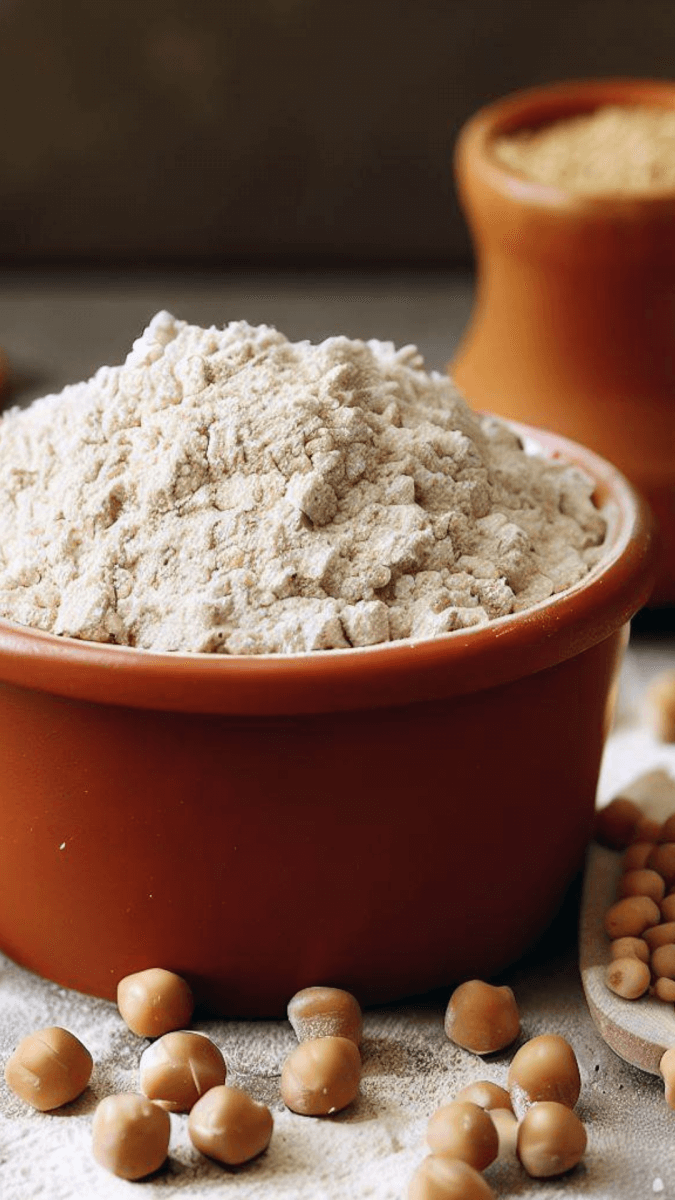
Coconut Flour
Using coconut flour as a substitute for semolina flour can be an interesting option, especially if you’re looking to add a unique flavor and texture to your dish. However, there are important differences in texture, flavor, and behavior between the two flours that you should consider. Here’s how you can use coconut flour as a substitute for semolina flour:
- Coconut flour is finer and absorbs more liquid than semolina flour, which has a coarser texture. When substituting coconut flour, you’ll likely need to adjust the liquid content in your recipe.
- Coconut flour has a distinct coconut flavor that will significantly alter the taste of your dish. Consider whether this flavor complements the other ingredients in your recipe.
- Coconut flour is very absorbent, so start by using a smaller amount in your recipe. You may need to use significantly less coconut flour and adjust the liquids accordingly.
- Coconut flour is naturally gluten-free and can be used as an alternative in gluten-free recipes.
- Coconut flour can work well as a substitute in recipes where the coconut flavor is a desirable addition and where the absorbent nature of coconut flour won’t negatively affect the dish. Recipes like certain desserts, pancakes, or baked goods that can handle the coconut flavor might benefit from this substitution.
- Because of coconut flour’s unique characteristics, it’s important to test the substitution in a small batch before making a larger quantity. This will help you understand how the coconut flavor and absorbent nature of coconut flour impact the final dish.
- Adjust the liquid levels in your recipe if needed. Coconut flour is extremely absorbent which can make the final product dry if not properly adjusted.
- Coconut flour lacks gluten, so in recipes that rely on gluten for structure (such as bread or pasta), you might need to use additional binding agents. Or you could combine coconut flour with other flours.
In summary, using coconut flour as a substitute for semolina flour can work well in recipes where the coconut flavor is a desirable addition and where the absorbent nature of coconut flour can be managed. Adapt the substitution based on the specific requirements of your dish, and be prepared to adjust the ratios and liquids to achieve the desired texture and flavor.
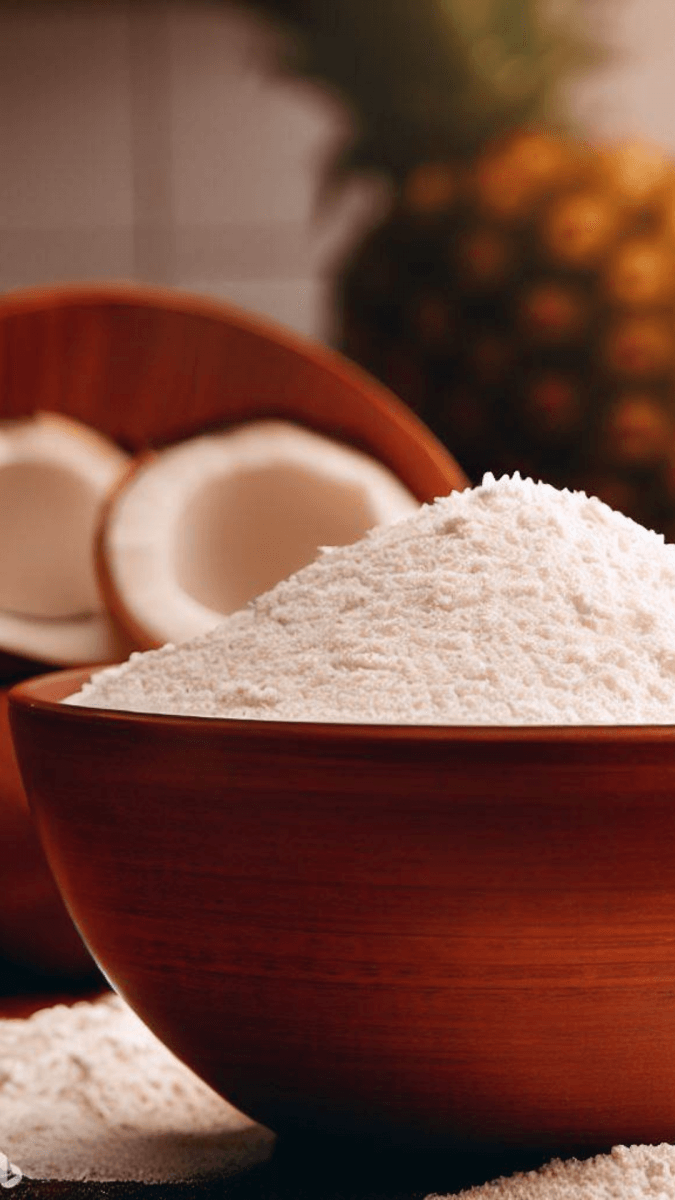
Almond Flour as a substitute for Semolina Flour
Substituting almond flour for semolina flour can work in certain recipes. Almond flour is also great when you’re looking for a gluten-free and low-carb option. However, almond flour has different properties than semolina flour, so it’s important to consider how the substitution will affect the texture, flavor, and overall outcome of your dish. Here’s how you can use almond flour as a substitute for semolina flour:
- Almond flour has a finer and softer texture compared to semolina flour. It can add moisture and tenderness to recipes, so consider whether this texture is appropriate for your dish.
- Almond flour has a distinct nutty flavor, which will contribute a noticeable taste to your dish. This flavor can work well in certain recipes, but it might not be suitable for all dishes.
- Almond flour absorbs more moisture than semolina flour, so you’ll likely need to adjust the ratios and possibly increase the amount of liquid in your recipe. Start by substituting a smaller amount of almond flour than the semolina flour called for. Then you can adjust from there based on the desired consistency.
- Almond flour is gluten-free and lower in carbohydrates than semolina flour. This makes it a suitable option for gluten-free and low-carb diets.
- Almond flour can work well as a substitute in recipes where the nutty flavor and softer texture complement the dish. Use in gluten-free baking, such as in muffins, cookies, and cakes.
- Test the substitution in a small batch before making a larger quantity. This will help you understand how the almond flavor, texture, and moisture absorption of almond flour affect your specific recipe.
- Almond flour doesn’t contain gluten, so in recipes where gluten is important for structure (such as bread or pasta), you might need to use additional binding agents. Or you could combine almond flour with other gluten-free flours.
- Keep in mind that almond flour might not be suitable if you or your intended audience have nut allergies.
In summary, using almond flour as a substitute for semolina flour can work well in certain recipes where the nutty flavor and texture of almond flour enhance the dish. Adapt the substitution based on your specific recipe’s requirements and your preferences for flavor and texture.

Summary for Semolina Flour substitutes
Okay – that’s you all sorted with suitable substitutes for semolina flour.
In conclusion, there are several options available when considering substitutes for semolina flour, each with its own unique characteristics. The choice of substitute depends on the specific recipe, desired texture, flavor, and dietary considerations. Here’s a summary of the key points for each substitute:
- Durum Wheat Flour: Regular durum wheat flour is the closest match to semolina flour, as semolina is a type of durum wheat flour. It can be used as a direct substitute in many recipes, though the texture might be slightly different.
- All-Purpose Flour: All-purpose flour is versatile and can work as a substitute for semolina. Remember though the texture and flavor might not be quite the same. It’s best suited for recipes where a coarser texture isn’t crucial.
- Rice Flour: Rice flour can be used as a gluten-free substitute, but it has a finer texture. It works well in delicate dishes like pastries.
- Cornmeal: Cornmeal can provide a similar coarse texture to semolina, but with a distinct corn flavor. It’s suitable for recipes that can benefit from this flavor and texture.
- Quinoa Flour: Quinoa flour is gluten-free and has a nutty flavor. It can work in recipes where the unique taste and texture are appropriate.
- Chickpea Flour: Chickpea flour has a distinct flavor and slightly grainy texture. It’s a good choice for gluten-free recipes that can handle its taste.
- Coconut Flour: Coconut flour adds a coconut flavor and is very absorbent. It’s suitable for recipes where the flavor is desired and the absorbency can be managed.
- Almond Flour: Almond flour offers a nutty flavor and softer texture. It’s best suited for gluten-free and low-carb baking where the texture and flavor align with the recipe.
Remember to consider the specific requirements of your recipe, your dietary preferences, and the intended outcome when choosing a substitute for semolina flour. Experimentation and testing in small batches can help you determine the best substitute for your needs.
We have gathered together a lot more facts on ingredients such as herbs, spices, oils, nuts, etc. if you would like to learn some more.
